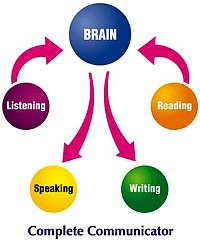 |
Learn English Locally, Apply It Worldwide! Enjoy Regular Practice |
Email Writing in English
Welcome to all new subscribers! I am very glad you've joined My English Club and I hope we'll be able to communicate a lot in the future.
This is my first lesson for you. I created this lesson for my first 2 subscribers, on 13 November 2012, as they mentioned on the joining form they are beginners and it looked like they needed this guiding hand. If you don't need this lesson feel free to just ignore it.
So, let's prepare you for your next email to us
An email has 3 main fields:
1) The recipient of your email, where you'll input the email address(es) where you want to send your message to. If you have more than one address, you need to separate them by commas
2) The subject field,
where you'll give a succinct indication of what your message is about.
It is good practice to make the receiver of your email see straight away
if (s)he needs to take action or just receive the information from you.
You could use one of these words for this purpose: Re: = "regarding/referring to" or "in reference to"; FYI = "For Your Information" (no action required); Action = action is required and it would be good to also indicate the date the action is due; Urgent = this requires "Immediate Attention"; REQ = this is a "Request" for something
3) The message field, where you will write the message you wish to convey to the receiver of your email.
The first thing you need to put in an email is a salutation formula. There are quite a few greetings that are OK to use, depending on the time of the day/night and the tone of the email - formal or informal.
Let me give you some examples:
- You could simply write: Hi, .............. (and add the name of the receiver)
- You could greet: Good morning, ...... / Good afternoon, ........ Good evening ......
(but for this you need to know roughly what time of the day will the recipient read your message, if you want to be very precise, or just use the appropriate greeting, according to the time when you're writing the message); - The name you use in your salutation formula will depend on the tone of your email: informal = if you write to a friend or an acquaintance you will use the first name; or formal = if you write to an official person, or to apply for a job or an interview, etc.
Then you will write your message.
- I recommend to put the topic of your email in the Subject box, above your email text, but only use between 2 to 5 words for this if possible;
- Keep your message short and to the point. You need to be very clear about what you want to say and find the best words and phrases for your message;
- Check, even double check your email for grammar and spelling errors. Always write as correctly as you can, even if you need to review the rules before writing your text. When you finished, read it out loud to yourself. If you've never done this before, you'll be surprised how much of it you'll be able to correct instinctively;
When
you finished your message you need to close your email with an ending
salutation. Normally this would be 'Kind regards. Yours sincerely (or
respectfully)' and your name - write all this in 3 lines. Note:
so many people in China don't put their names at the end of their email
(or text messages for that reason) that I find it worthwhile stressing
it again how important this is when you communicate to anybody by these
means. It is not only common practice - it is considered basic courtesy
to sign your messages!
When you're ready and happy that everything you know is presented correctly, that you've attached everything you wanted to send.... click on send and wait for the reply.
P.S.
There is more than this to writing emails, but this is a good step to
start with. I look forward to receiving your new email about yourself
and your wish to learn English.
Back to the Home Page
English Corner Weekly E-zine
Packed with knowledge, published on Tuesdays.
Get yours here!
Our Archives:
Our lessons in the names and sounds of letters, short & long vowel sounds, CVCs, CCVCs, CVCCs, sight words, vowel and consonant contrasts, etc.
Our lessons will help increase your vocabulary, word recognition, find meaning in context, skills for TOEFL tests and other games, for fun.
Here we shall build some lessons to help you improve your writing skills.
Lots of lessons: cause & effect, comparisons, linking signals, relative clauses, presenting information, expressing emotions and grammar games, of course. We had more lessons on: intensifying adverbs and phrasal verbs, expressing various concepts such as addition, exception, restriction and ambiguity. Lately we started some exercises: likes/dislikes, frequency adverbs (twice), verb tenses, etc.
Learn how to build a website, by using the SBI! system - start from the basics, developing a site concept and a niche, supply and demand, learn about profitability and monetization, payment processing, register domain, website structure and content as a pyramid. Also learn about the tools I'm using to build this website. We also covered how to build traffic, working with search engines, building a good system of inbound links, using social marketing and blogs with the SBI system, how to use Socialize It and Form Build It, how to publish an e-zine and how to build a social network in your niche.
We looked at a few games by now: Countable & uncountable nouns, Free Rice, Name That Thing, Spell It, Spelloween, the Phrasal Verbs Game, Preposition Desert, The Sentence Game, Word Confusion, Word Wangling, Buzzing Bees, and The Verb Viper Game.
Be prepared to play and learn more pretty soon.
